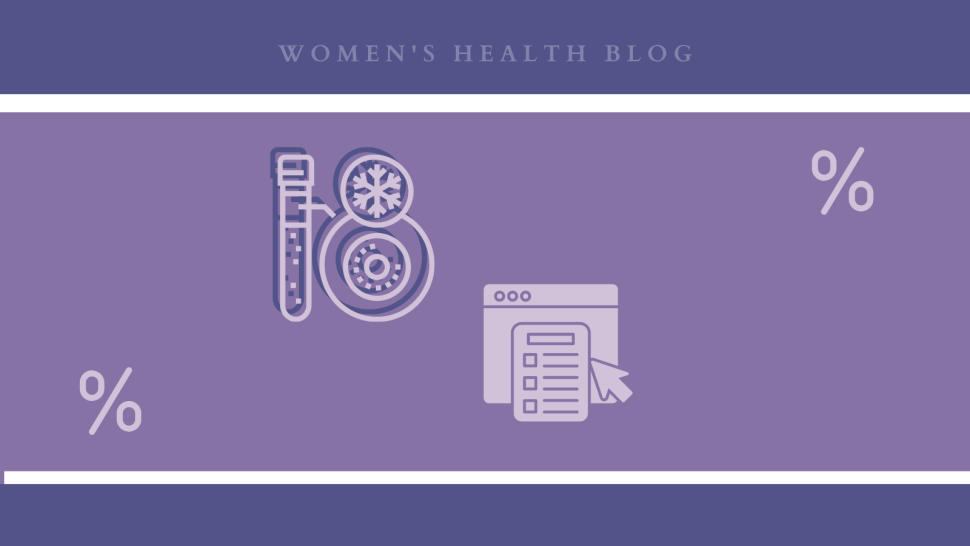Authors: Maryam Fatima, BHSc (Hons) & Samantha Yee, PhD, MSW | Editors: Romina Garcia de leon, Shayda Swann (Blog Coordinators)
Published: July 14, 2023
What is Planned Egg Freezing?
Planned egg freezing, also known as social or elective egg freezing, involves administering fertility drugs and using assisted reproductive technologies to retrieve and cryopreserve eggs for future use. It is an elective medical procedure utilized by women without an imminent fertility threat (e.g., cancer treatment), to preserve healthy eggs before age-related fertility decline. Elective egg freezing is an expensive uninsured medical procedure ranging from $12,000 to $15,000 CAD, although some of the costs may be covered by insurance plans. Since the American Society of Reproductive Medicine (ASRM) declared egg freezing an established clinical procedure in 2012, electively cryopreserving eggs has gained popularity. Additionally, the social distancing measures implemented during the COVID-19 pandemic presented a unique circumstance in which single women had limited opportunities for dating, prompting more women interested in preserving eggs proactively as evidenced by a drastic increase in planned egg-freezing cycles at fertility centers during the pandemic.
Why Do Women Pursue Planned Egg Freezing?
The current societal shifts and increased accessibility to contraceptives have contributed to a trend of delayed parenthood in developed countries. In Canada, a woman’s average age at first birth has increased steadily since the 1970s, from around 24 years to 31 years in 2021. However, fertility and egg quality decline drastically beginning around the mid-30s, leading to heightened interest in cryopreserving eggs to prevent future unintended childlessness or smaller-than-desired family size due to secondary infertility. Contrary to popular belief, research has shown that career development is not the primary reason women want to freeze eggs. Instead, other factors play significant roles, such as the absence of a committed partner to start a family, being in an unstable relationship, wanting a backup plan against age-related fertility decline, alleviating the pressure of the “biological clock”, and avoiding future regret for not making use of available cryopreservation technology.
Why Are Women Late to Planned Egg Freezing?
A Canadian study conducted at an in-vitro fertilization (IVF) centre found that women underwent planned egg freezing at a mean age of 37, and four in five only completed one egg freezing cycle. This is problematic as the highest likelihood of live birth is when egg-freezing is performed before age 35. Since eggs cryopreserved after this age have much lower quality, older women are often recommended to freeze more eggs by undergoing more freezing cycles. An alternative for older single women is to cryopreserve embryos using donor sperm, as frozen embryos have a higher success rate than frozen eggs. An estimation prediction model suggested that at age 34, one would need to freeze 10 eggs to have a 75% likelihood of at least one live birth, and the projection increases to 20 eggs for 37 years and 61 eggs for 42 years. It is plausible that women may be waiting until they reach mid-35 before considering egg freezing. Affordability is another main reason why this uninsured procedure is out of reach for some women.
A lack of knowledge regarding fertility decline also leads to delayed planned egg freezing. A survey conducted by a Canadian IVF center reported that almost half of the respondents felt inadequately educated on fertility decline before pursuing planned egg-freezing, and only half could correctly identify the age range where fertility decline begins. Concerningly, 37% of respondents obtained egg freezing information from mass media, while only 12% received education from their primary healthcare practitioners. Some practitioners hesitate to initiate the planned egg freezing conversation with their healthy patients due to insufficient knowledge or feeling skeptical of the procedure’s success. Furthermore, if family planning is not included in the annual checkup discussion, patients are left unaware of their fertility options. Canadian ethicists have also raised concerns about the invasive nature of the procedure, although it is no less risky than patients undergoing IVF. There is also a lack of established studies about the long-term safety of offspring. The procedure may be unnecessary for older women whose egg quality has already been compromised, or if cryopreserved eggs end up unutilized. Most importantly, planned egg freezing may offer women false security about their fertility since there is no guarantee of a successful live birth from cryopreserved eggs. Studies have indeed reported low utilization rates of cryopreserved eggs, from 2.3 - 20.9%, but the follow-up period was often a short 2 years, and it is likely that most women were still attempting to establish a stable relationship or conceive naturally during this time.
The decision to pursue planned egg freezing is highly individualized and influenced by various factors. By improving communication between practitioners and patients on fertility and family planning matters, enhancing counselling, and providing accessible information, women can make informed decisions about their reproductive futures and avoid future regret.
